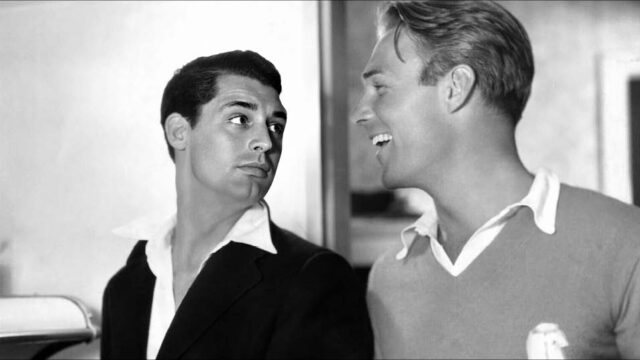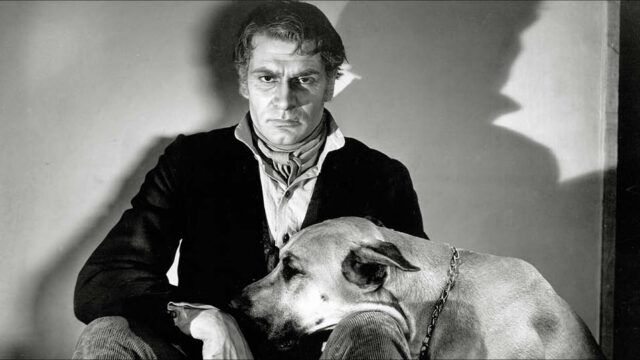Series producer/director Luke Korzun Martin and producer Charlene Chika Osuagwu of upcoming Paramount+ silver screen series, 1939: Secrets of Hollywood’s Golden Year, explain how the show came together.

Luke Korzun Martin (Series Producer/Director) on Making the Brook Lapping Series
1939 was Hollywood’s most important year. The studios were at their zenith with the likes of MGM, Warner Bros and 20th Century Fox making a staggering $659 million from masterpieces like The Wizard of Oz and Gone With the Wind.
When we were discussing the project with our Brook Lapping Executive Producer Emma Hindley and Paramount+ Commissioning Editor Daniel Pearl, I soon realised that we couldn’t just showcase the films made in this legendary year. It was also important to unravel the complex social history behind Hollywood’s golden era. It was a time in which sexism was ever-present, racism was rife, homosexuality was kept firmly in the closet, and the spectre of WW2 was on the horizon.

Insider Testimony:
To get the inside scoop on what was happening behind the scenes in Hollywood, the first port of call was to find interviewees who could speak with authority and first-hand knowledge. With all the major players sadly no longer with us, our producer Charlene Chika Osuagwu spent many painstaking months assembling a cast of insiders who were intimately connected with the stars. Charlene’s persistence was rewarded with an extraordinarily candid and emotional cast of contributors.
Lorna Luft (Judy Garland’s daughter) and Rosalyn Wilder (Judy Garland’s personal assistant) reveal the toll the studio system took on Judy Garland. While she was playing Dorothy in The Wizard of Oz, 16-year-old Judy was put on a diet to lose weight, had little round discs put in her nose to give it a more desirable curved shape, and was given ‘pep pills’, amphetamines that would enable her to cope with extremely long filming hours.
Tarquin Olivier (Laurence Olivier’s son) and Trader Faulkner (Vivien Leigh’s close friend) chart the scandalous love affair between Laurence Olivier and Vivien Leigh.
Peter Bogdanovich (film director) and Dan Ford (John Ford’s grandson) uncover the off-camera tension between actor John Wayne and director John Ford on Stagecoach.
We also garnered access to a number of top film historians who’d conducted original research into this era, as well as Stephen Fry, a lifelong fan of Hollywood’s golden age.

Revealing Archive:
With 510 films produced by Hollywood’s studios in 1939, the task of watching as many of them as possible was daunting, to say the least. To see all of them would have taken us over 40 days of solid binge-watching, so we quickly whittled our list down to classics that would help us tell the social history of the year. We focused on films like Mr. Smith Goes to Washington starring James Stewart which inflamed the Hollywood censors for its depiction of political corruption in 1930s America; Greta Garbo’s Ninotchka which critiqued Communist Russia; and Confessions of a Nazi Spy which foregrounded the Nazi threat on the eve of WW2.
Our archive producer Joanna Taylor and film editors Ian Merrylees and Kristy Jane Breetzke hunted for little-seen morsels in the behind-the-scenes archive footage. They unearthed the Scarlett O’Hara screentests for Gone With the Wind; home movie footage of Laurence Olivier and Vivien Leigh; and backstage antics from The Wizard of Oz.
We also uncovered documents that provided a glimpse into the machinations of the studios. For example, David O. Selznick’s infamous memos on the fraught production on Gone With the Wind; Bette Davis’ scathing ultimatum over her contract with Warner Bros; and Hedda Hopper’s gossip columns that seeded rumours about Cary Grant’s sexuality.

Charlene Chika Osuagwu (Producer) on Race and Racism in Gone With the Wind
Gone With the Wind was 1939’s most successful motion picture, becoming the highest-earning film up to that point and receiving 10 Academy Awards.
As a black woman, I was particularly keen that any consideration of the film’s popularity would be balanced with an awareness of the racial issues surrounding it. From the pervasive presence of racism in 1930s America to the film’s romanticised depiction of the Confederate South and slavery.
We unravelled key moments in the film that to modern eyes are particularly challenging – from the seemingly idyllic scenes of black plantation workers bathed in glamourised golden light to young white southern belles being fanned by black children.
Hattie McDaniel’s performance as ‘Mammy’ presented an opportunity to explore the nuances of race in Hollywood. As Kevin John Goff, Hattie’s closest surviving relative reveals, Hattie was faced with the conflict of having to play stereotypical roles in order to keep her career. Although ‘Mammy’ would become the most memorable role of her career, it would also come to embody the uncomfortable history of how Hollywood depicted blackness on screen.
Hattie McDaniel would go on to win Best Supporting Actress, becoming the first African American to win an Oscar. But she was segregated from her co-stars during the ceremony. A reminder that even at the height of success, black actors faced racism at every turn in Hollywood in 1939.
1939: Secrets of Hollywood’s Golden Year will be available on Paramount+ from 1 March.
Jon Creamer
Share this story

















